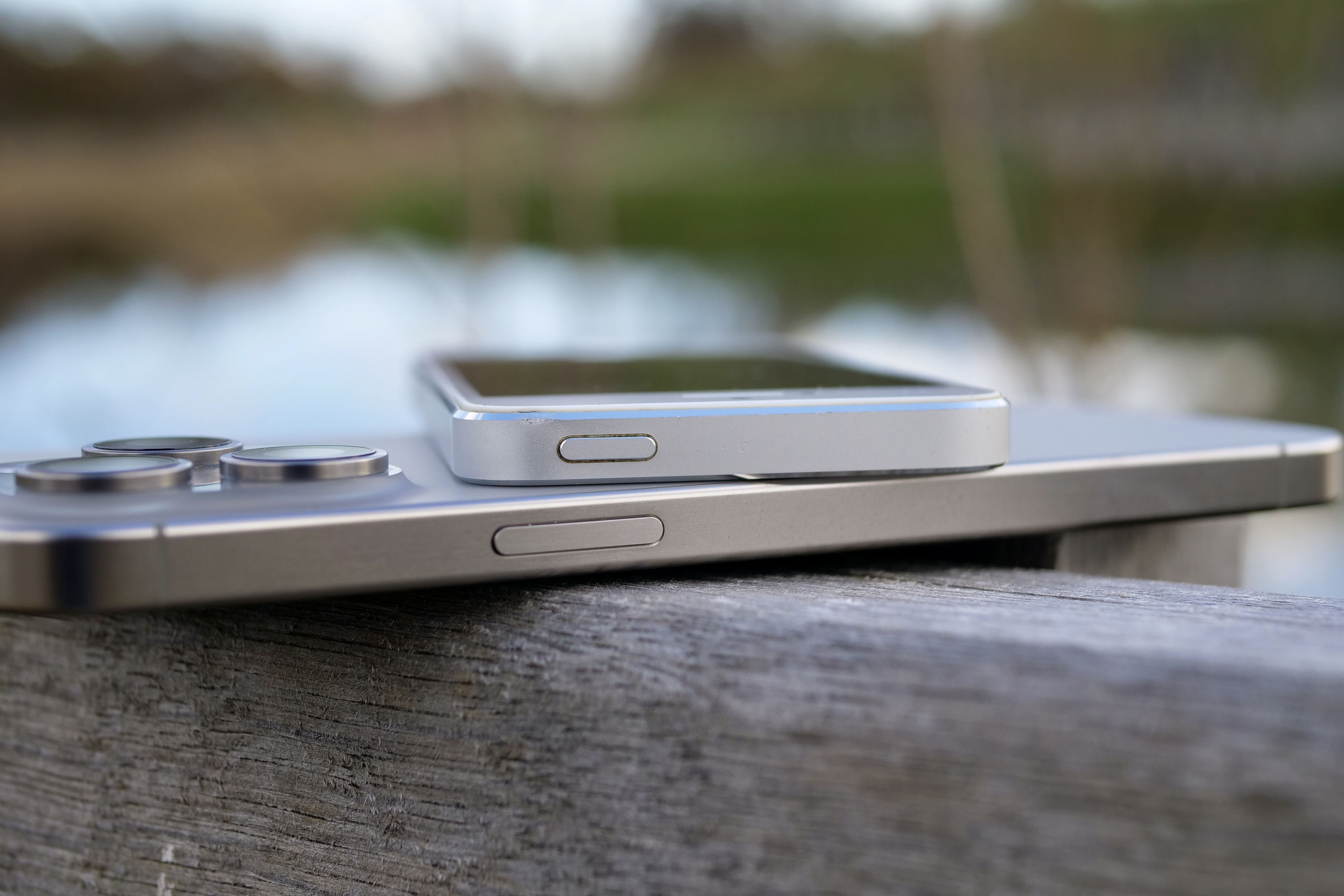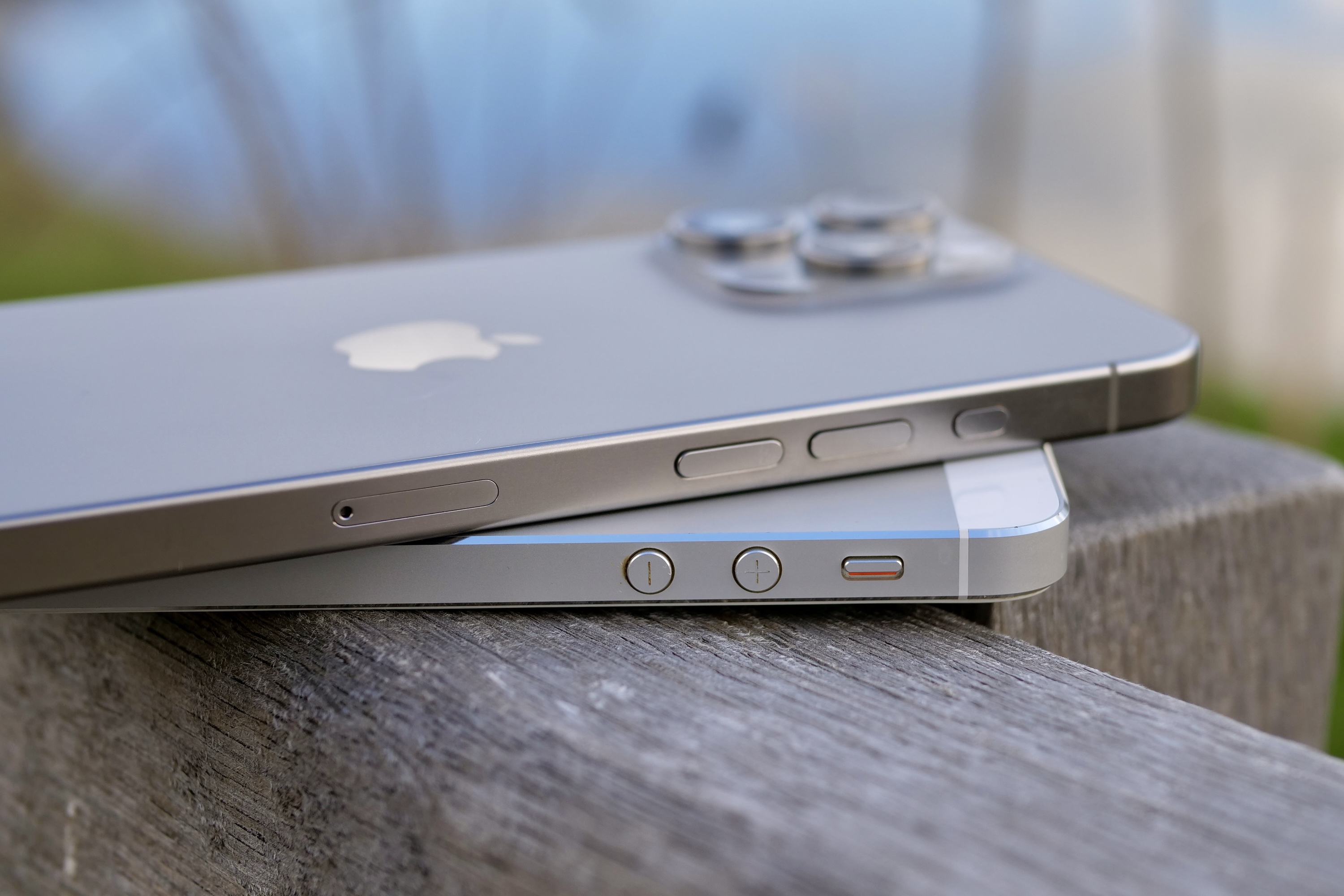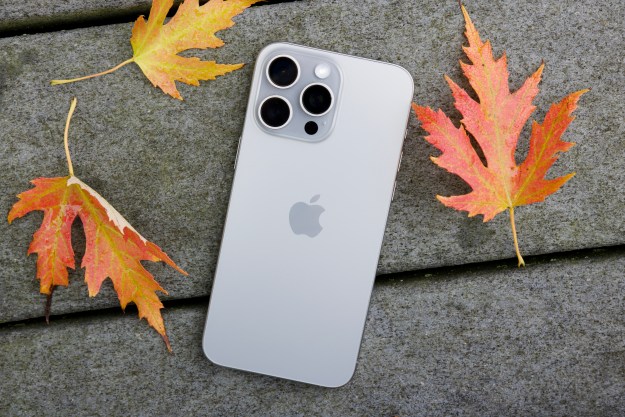
I really like the iPhone 15 Pro Max’s camera, which performed well in both our review and a recent camera test.
But after discovering an old, long-forgotten Apple iPhone 5 in a drawer at home and finding it was still in perfect working order, I wondered just how different photos taken with it would be compared to those taken by its current equivalents. I decided to find out in one of the more unusual camera tests I’ve ever performed.
Context and cameras

Before getting into the photos, it’s worth putting everything into context. In September 2012, Apple released the iPhone 5 — a flagship $650 smartphone that took on the Samsung Galaxy S3 and a host of other phones, including the Nokia Lumia 920 and the HTC One S. More than 10 years later, at the end of 2023, Apple released the $1,200 iPhone 15 Pro Max, which competes with the Samsung Galaxy S23 Ultra and phones like the OnePlus 11 for attention.
The iPhone 5 is tiny compared to its modern equivalents with its 4-inch, 1136 x 640-pixel screen, and immediately recognizable due to the large bezels surrounding it, plus the physical Home button in the lower section. There’s a single 8-megapixel camera on the back and a 1.2MP selfie camera on the front. There’s no wide-angle camera, no portrait mode, only 1080p video recording, and absolutely no AI or clever camera tech like Deep Fusion.
The iPhone 15 Pro and Samsung Galaxy S23 Ultra are positively loaded with features, have multiple cameras, and vastly different specifications. I threw the OnePlus 11 into the mix for this test, where the camera has the backing of Hasselblad — one of the biggest names in the camera business.
Obviously, these newer phones will all take far superior photos. But just how much have things changed over the last 11 years?
Night mode
- 1. Apple iPhone 5
- 2. Apple iPhone 15 Pro Max
- 3. OnePlus 11
- 4. Samsung Galaxy S23 Ultra
Why am I starting with Night mode? It’s because the key differences in the iPhone 5’s lowlight performance compared to today’s phones also seem to shape the main camera’s performance. Lowlight is also where smartphone cameras have genuinely advanced over the last decade, as you’re about to see.
Unsurprisingly, photos taken in the dark with the iPhone 5 don’t come close to the images we get from a modern smartphone. In the photo above, the Christmas tree is recognizable, but there’s no definition; the lights are blown out, and the background is noisy and lacking detail. It’s a completely different story looking at the photos from the newer phones, which have definition, clarity, and detail throughout.
Interestingly, you can see similarities between the overall tone and handling of lowlight scenes in the two Apple phones, as the iPhone 15 Pro Max’s photo isn’t overly bright either. The Galaxy S23 Ultra and the OnePlus 11 increase the brightness a lot by comparison, and it’ll be down to personal taste which one you prefer.
- 1. Apple iPhone 5
- 2. Apple iPhone 15 Pro Max
- 3. OnePlus 11
- 4. Samsung Galaxy S23 Ultra
The photo of the tree was taken in an environment with plenty of ambient light. The second photo had far less light available, with only a nearby streetlight illuminating the scene. You don’t need me to point out the differences here, with the iPhone 5 unable to pull in enough light (or having the software ability to compensate for a lack of it) to show anything of value. It’s accurate, though, as it was almost this dark to my own eyes.
Look at all four, and you can see how the OnePlus 11’s photo is much brighter than the others — showing so much more of the surrounding scene and even boosting the colors too. It’s the least realistic and the photo that packs the most punch. Viewed alongside the iPhone 5’s photo, it’s barely believable the two photos were taken at the same time in the same spot.
Now that we see how light impacts the iPhone 5’s camera at night, you’ll be able to see how it also changes its daytime performance.
Main camera
- 1. Apple iPhone 5
- 2. Apple iPhone 15 Pro Max
- 3. OnePlus 11
- 4. Samsung Galaxy S23 Ultra
The iPhone 5 only has a single camera, so let’s see how it performs in different environments. The first photo of the church was taken in fairly poor daylight, around midday, and while it wasn’t sunny, it certainly wasn’t dark. Unfortunately, the image is murky and dull, lacking any color even in the grass. It’s not representative of what I was seeing with my own eyes at all.
The OnePlus 11 doesn’t do a great job in this environment either, with poor exposure washing out the sky and bathing detail in shadow. The iPhone 15 Pro Max and the Galaxy S23 Ultra took quite similar photos, with slight variations in color, contrast, and balance. But all show a very different, far more accurate depiction of the scene than the iPhone 5.
How about something more colorful? The iPhone 5’s photo of the fruit is also lacking punch and vibrancy, with the yellow shades being particularly dull. There’s also a lot less detail and texture, as you’d expect, given the difference in pixel counts. The images taken with the iPhone 5 are 3264 x 2448 pixels, considerably lower than the iPhone 15 Pro Max’s 5712 x 4284 pixels.
- 1. Apple iPhone 5
- 2. Apple iPhone 15 Pro Max
- 3. OnePlus 11
- 4. Samsung Galaxy S23 Ultra
It was also a dreary day when the photo was taken, but this is somewhat masked by today’s cameras, which make the scene a little more exciting and enticing than it was in real life. The iPhone 5’s somber view of reality simply doesn’t inspire you to take many photos. Along with the photo of the church, you can begin to see how emotions connected with the photos can change between the cameras, too.
- 1. Apple iPhone 5
- 2. Apple iPhone 15 Pro Max
- 3. OnePlus 11
- 4. Samsung Galaxy S23 Ultra
But the little iPhone 5 can still surprise, and I think it did in the image of the lake, where the contrast, exposure, tone, and colors are all far more natural and appealing compared to the iPhone 15 Pro Max’s photo, which got it all wrong. The OnePlus 11 and Galaxy S23 Ultra took great photos, though, and are far more appealing and natural than both of the iPhone photos.
- 1. Apple iPhone 5
- 2. Apple iPhone 15 Pro Max
- 3. OnePlus 11
- 4. Samsung Galaxy S23 Ultra
It doesn’t usually work out that way, with photos taken with the iPhone 5 on brighter days appearing more like paintings than photographs due to the minimal detail and inherent fuzziness. In photos taken with the iPhone 5, skies are less blue, greens less vibrant, and the world is apparently a slightly drearier place. Modern smartphone cameras all boost the colors, contrast, and saturation to make the surrounding world more visually exciting in our photos.
- 1. Apple iPhone 5
- 2. Apple iPhone 15 Pro Max
- 3. OnePlus 11
- 4. Samsung Galaxy S23 Ultra
The world isn’t just more visually exciting, it’s also happier when shot through a modern phone’s camera. The iPhone 5’s photo of the funny Christmas decoration on the wooden table borders on the depressing, with its overexposed sky and drab colors, but the same scene captured by the other cameras gives a very different emotion. Photographs should prompt a reaction, but it’s hard to feel anything for the iPhone 5’s photo.
More than just better quality

After I used the iPhone 5 and looked at the resulting photos, it wasn’t the quality of the images that really stood out to me. It was always obvious a modern phone would take better photos than one made 10 years ago, and seeing the difference in detail wasn’t a surprise. But I hadn’t expected to find such a dramatic emotional difference in the photos.
If the iPhone 5 was the pinnacle of smartphone cameras today, I simply wouldn’t take as many photos and certainly wouldn’t share them very often, at least not in the same way I do today. There would be less creative freedom and fewer opportunities to capture special photos you want to edit and enhance. If it were the best I could get, then I wouldn’t know any different, but I’d definitely care less about taking photos if the iPhone 5 was in my pocket every day in 2023.

Many things have shaped how phone cameras have changed over the last decade, with technology improvements, social media, and even faster data speeds to make sharing images quicker and easier, all playing a part. The iPhone 5’s view of the world wasn’t accurate or enticing, and even if modern phones tend to swing in the opposite direction a little too far sometimes — through strong HDR, manufacturer-specific tuning, and a vast array of filters — I definitely prefer it. They help shape memories connected with emotion in a way the iPhone 5 can not.
We often look back at the past with rose-tinted glasses, but the iPhone 5’s camera is a reminder that some things really can change for the better.
Editors' Recommendations
- Nomad’s new iPhone case and Apple Watch band may be its coolest yet
- iPhone 16: news, rumored price, release date, and more
- Why you should buy the iPhone 15 Pro Max instead of the iPhone 15 Pro
- This is our best look yet at the iPhone 16’s big design changes
- 10 reasons you should buy an iPhone in 2024





































